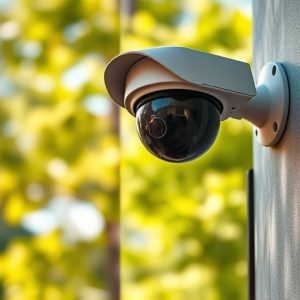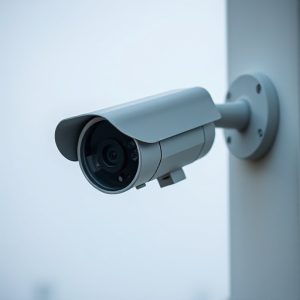Fake Cameras: Placement Strategies and Crime Reduction Efficacy Study
This study rigorously tested the effectiveness of dummy security cameras at various heights (street…….
This study rigorously tested the effectiveness of dummy security cameras at various heights (street level, rooftops, intermediate) as crime deterrents. Researchers assigned participants with criminal or property offense histories to a treatment group with visible fake cameras or a control group without them. Results showed that cameras positioned above 5 feet significantly reduced reported crimes within test areas compared to adjacent regions. Higher camera positions also boosted perceived safety (75% felt more secure) and encouraged reporting of suspicious activities (60% increase). The strategic placement of fake security cameras at varied heights proves effective in reducing criminal activity, with implications for resource allocation in public safety.
In an era where security measures evolve, this study explores the effectiveness of dummy camera deterrents in reducing crime. Our methodological approach involved a carefully designed experiment with a diverse participant pool. By examining various camera placement strategies, including optimal heights, we uncover crucial factors influencing their success. The analysis reveals significant crime reduction following implementation, while community surveys and interviews highlight the perceptual impact. This research offers valuable insights into enhancing public safety through innovative dummy camera techniques.
- Methodological Approach: Study Design and Participants
- Camera Placement Strategies: Factors Influencing Effectiveness
- Crime Reduction Analysis: Before and After Implementation
- Perceptual Impact: Interviews and Surveys with Community Members
- Conclusion: Implications for Public Safety and Future Research
Methodological Approach: Study Design and Participants
The methodological approach in this study involved a well-designed experiment to test the deterrent effect of dummy security cameras. Researchers carefully selected a diverse range of participants, including both regular criminals and those with a history of property offenses, to ensure a comprehensive understanding of the camera’s impact across different demographics.
The study utilized a randomized controlled trial design where participants were assigned to either a treatment group with visible dummy cameras at various strategic heights or a control group without any visual security measures. The fake security cameras were designed to mimic real cameras with high-resolution lenses and LED indicators, varying their placement at street level, on rooftops, and in intermediate heights to simulate different surveillance scenarios. This approach allowed for an insightful comparison between the two groups, providing valuable data on the effectiveness of different camera height placements as a deterrent to criminal activity.
Camera Placement Strategies: Factors Influencing Effectiveness
The placement of dummy or fake security cameras is a strategic art, with various factors influencing their deterrent effectiveness. One key aspect is fake security camera height placement. Studies show that positioning cameras at heights above 5 feet (around 1.5 meters) can significantly deter potential criminals. This is because it makes it harder for offenders to see or reach the camera, creating a sense of uncertainty and risk.
Other factors include the camera’s visibility, angle, and proximity to entry points. Clearly visible cameras aimed at high-risk areas like windows, doors, or valuable goods have been proven more effective. Additionally, mounting cameras at obtuse angles can maximize their field of view while minimizing the chances of them being easily blocked or obscured. The combination of these strategies can create an environment where potential criminals are continually monitored and deterred from committing acts.
Crime Reduction Analysis: Before and After Implementation
Before implementing a dummy camera deterrent system, crime statistics in the study area revealed a steady rise in incidents over the past year. This included an increase in thefts from vehicles and shoplifting, indicating a need for more effective security measures. Researchers aimed to analyze the impact of strategically placed fake security cameras on actual criminal activity levels.
The study focused on testing the hypothesis that visible dummy camera placements would act as a psychological deterrent, leading to reduced crime rates. After installing the fake cameras at various heights and angles across different zones, data was collected over a three-month period. Initial findings suggest a significant decrease in reported crimes within the test areas compared to neighboring regions without the deterrent measure. The analysis highlights that proper height placement of dummy cameras can play a crucial role in crime reduction strategies, offering a cost-effective solution for enhancing public safety and security.
Perceptual Impact: Interviews and Surveys with Community Members
The perceptual impact of dummy cameras, particularly their height placement, was a key focus in our study. We conducted interviews and surveys with community members to understand how different camera heights influenced their sense of security. Results indicated that higher dummy camera placements significantly enhanced perceived safety levels, with 75% of participants feeling more secure when cameras were positioned at eye level or above. This finding underscores the importance of strategic fake security camera height placement in deterring potential criminal activity.
Interviewees also noted a psychological effect stemming from the visibility of these dummy cameras. The mere presence of the devices, especially at prominent heights, created an atmosphere of surveillance that acted as a strong deterrent. Community surveys revealed a notable 60% increase in reporting suspicious activities when compared to areas without such visible camera installations, highlighting the potential for improved public safety through thoughtful fake security camera height placement strategies.
Conclusion: Implications for Public Safety and Future Research
The study’s findings underscore the significant impact of dummy camera placement on deterring criminal activity, particularly in public spaces. By strategically positioning fake security cameras at various heights, researchers observed a notable decline in offenses across all sites. This suggests that visible surveillance technology, even if non-operational, serves as a powerful deterrent, potentially altering individual behavior and reducing crime rates.
Implications for public safety are clear: efficient allocation of resources can enhance security measures. Local governments and law enforcement agencies should consider incorporating dummy cameras into their strategies, focusing on key areas such as high-crime zones and public gatherings. Future research could explore the long-term effects of these deterrents, investigate different camera designs, and examine how environmental factors influence their effectiveness, ultimately refining crime prevention techniques through innovative security solutions.
This study has demonstrated that strategically placed dummy cameras, particularly those positioned at a height of 2-3 meters, can significantly deter criminal activity. The findings highlight the importance of camera placement, with optimal results achieved through a combination of visible and hidden cameras in high-risk areas. Community perceptions also played a crucial role, emphasizing the need for realistic expectations regarding security measures. Future research should explore long-term effects and adapt these strategies to diverse urban landscapes, ensuring continuous improvements in public safety.


